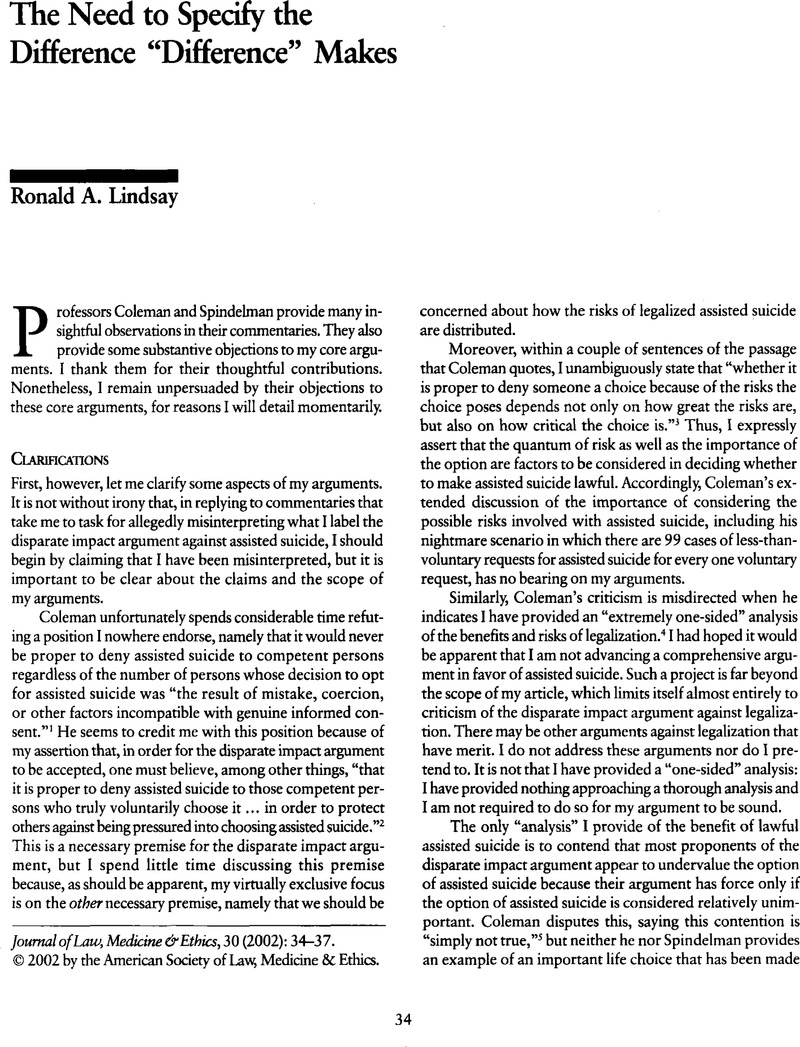There is one author who uses the disparate impact argument in the context of assisted suicide who recognizes both the possibility that assisted suicide presents an important option and that the importance of this option can make a difference as to whether assisted suicide should be legalized. In his article,
“Physician-Assisted Suicide in the Dark Ward: The Intersection of the Thirteenth Amendment and Health Care Treatments Having Disproportionate Impacts on Disfavored Groups,”
Seton Hall Law Review,
28 (
1998):
776–
896, at 798, Larry Pittman states that if “investigations show that pain medication is ineffective for many patients who can afford the medication, physician-assisted suicide should be legalized,”
id. at 798, with the caveat that if statistics show a “disproportionate impact on members of racial minority groups or members of any racial group,” then “a disproportionate impact claim under the Thirteenth Amendment” could be used as a “means of challenging the constitutionality of a state statute allowing physician-assisted suicide.”
Id. at 885. Effectively, Pittman maintains that if the option of assisted suicide is important, disparate impact can and should make a difference after legalization, but not before.
Google Scholar